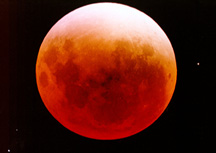Click on image for full size
Andy Steere
September's Total Eclipse of the Moon
News story originally written on September 25, 1996
On the night of September 26-27, almost everyone in the Americas and
Western Europe will have a perfect chance to view total lunar eclipse (assuming the skies are clear).
The lunar eclipse will start on September 27th at 12:12:29 am Greenwich Mean Time (GMT) when the
moon will start to show very faint shading. Note that for observers in the Americas, because of the time difference, the lunar eclipse will actually start on September 26th instead of September 27th. The moon will enter into total
eclipse about two hours later (2:19:20 a.m. GMT September 27th or 10:19 pm EDT
on September 26th) when the Earth's shadow will completely cover the Moon. The
moon will not be completely dark, however, because of the reflected light from
the Earth's atmosphere. The total eclipse will last about 70 minutes ending at
3:29:30 a.m. GMT (September 27) and the moon will reappear.
For sky watchers in North American eastern time zone, the lunar eclipse will
begin at 8:12 pm EDT (September 26) and end at 1:36 am EDT (September 27). The total lunar eclipse
will commence at 10:19 pm EDT (September 26) and end at 11:29 pm EDT (September 26).
You might also be interested in:

"The weather on Mars: another cool and clear day. Low morning haze will give way to a mostly sunny afternoon with high clouds. The forecast for Venus: hot, overcast, sulfuric acid showers will continue.
...more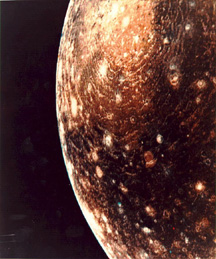
Early morning on November, 4 1996, NASA's Galileo spacecraft approached to within 686 miles of the stark, crater-smeared Jupiter's moon Callisto. This is the first time that Galileo has approached Callisto,
...more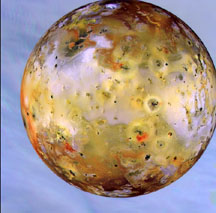
Scientists participating in NASA's Galileo mission have discovered that the during its Io fly-by, Galileo spacecraft may have flown through a dense, high-altitude ionosphere. This discovery suggests that
...more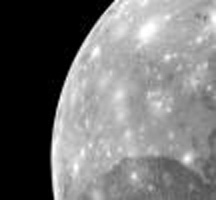
NASA's Galileo spacecraft has transmitted back crisp new images of Jupiter's moon Ganymede which show the moon's surface is daubed by comet and and asteroid impact marks. In addition to these findings,
...more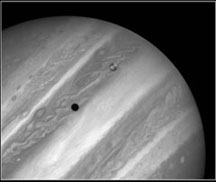
NASA'S Hubble Space Telescope has taken a rare joint portrait of Jupiter and its volcanically active moon Io, as the moon passes above the turbulent clouds of the giant gas planet. The conspicuous black
...more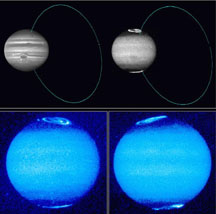
Scientists studying Jupiter's auroral regions are using images from Hubble's Wide Field and Planetary Camera 2 to map the planet's immense magnetic field and better understand the auroral phenomena. Aurorae
...more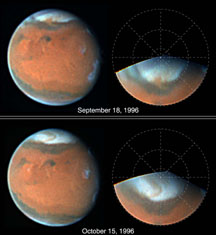
The Martian north polar is seen to be besieged by a Texas-sized dust storm. Two Hubble Space Telescope images, taken about a month apart shows this storm sitting at the edge of the north polar cap. It
...more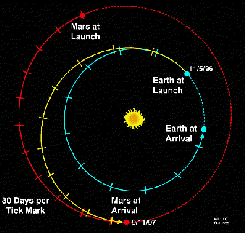
According to the most recent flight status report printed on January 24, 1997, the Mars Global Surveyor is in excellent condition and well on its way to the dusty red planet. The Mars Global Surveyor
...more


